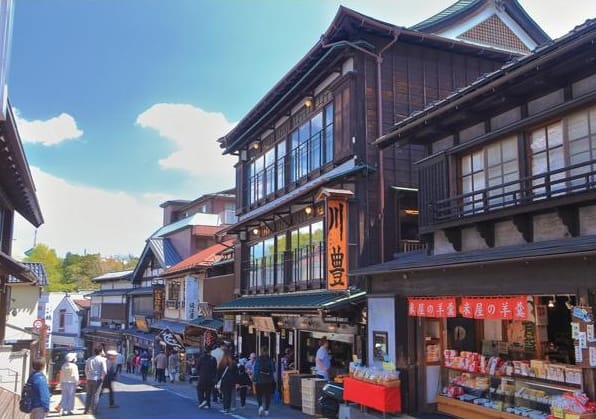What is your favorite city in Japan and why?
Discover Japan beyond tourist spots with insights into Kyoto’s daily life, hidden Tokyo gems, Okinawa’s local vibes, and serene nature escapes.

What is your favorite city in Japan and why?
That’s a tough one because Japan’s charm varies so much depending on where you go! If I had to pick just one, Kyoto city always pulls me back. It’s got this perfect mix of deep history and lively everyday life. I’m not just talking about temples and shrines; it’s the way locals live around those places that fascinates me. Walking through Kyoto’s backstreets early morning, you see elderly couples doing their exercises, shops setting up for the day, and kids heading to school in uniforms. It’s a living, breathing city where tradition isn’t just preserved for tourists—it’s part of daily routine.
But, honestly, my favorite spots change with moods and seasons. For quiet nature escapes, Kamikochi in Nagano is unbeatable—pure mountain air and stunning hikes. For coastal vibes, I love the nostalgic port town of Mojiko in Yamaguchi. And for a totally different island feel, the Okinawa islands offer crystal-clear waters and a relaxed pace that’s a refreshing break from big cities.
Here’s a quick rundown of some of my favorite cities across Japan, each with its own flavor:
EAST
- Asakusa & Kuramae (Tokyo Prefecture): Old Tokyo feels with great street food and hidden artisan shops.
- Kamakura (Kanagawa Prefecture): Beaches, giant Buddha, and a laid-back temple town vibe.
- Oku-Nikko (Tochigi Prefecture): Serene shrines and waterfalls nestled in forested mountains.
WEST
- Omihachiman (Shiga Prefecture): Traditional canals and charming old merchant houses.
- Nagarase-River (Gifu Prefecture): Beautiful river scenery and quiet rural life.
- Iwami-Ginzan (Shimane Prefecture): Historic silver mine town with a preserved atmosphere.
- Kyoto city (Kyoto Prefecture): Cultural heartland with a vibrant mix of old and new.
NORTH
- Tomamu city (Hokkaido): Famous for winter resorts and snow activities.
- Shiretoko (Hokkaido): Untouched nature, great for wildlife and hiking.
- Ginzan-Onsen (Yamagata Prefecture): Quaint hot spring town with nostalgic wooden ryokan.
- Hirosaki (Aomori Prefecture): Cherry blossoms and castle town charm.
- Kamikochi (Nagano Prefecture): Mountain paradise for trekkers.
- Kanazawa city (Ishikawa Prefecture): Art, gardens, and samurai history.
SOUTH
- All islands in Okinawa: Tropical paradise and unique Ryukyu culture.
- Aso Mt. (Kumamoto Prefecture): Volcanic landscapes and outdoor adventures.
- Nagasaki City (Nagasaki Prefecture): Unique blend of Japanese and Western influences.
- Mojiko-Port (Yamaguchi Prefecture): Retro port town with vintage architecture.
How do locals actually experience Kyoto city beyond the tourist spots?
While tourists flock to famous temples like Kinkaku-ji or Fushimi Inari, locals often enjoy the quieter neighborhoods like Higashiyama early in the morning or the Nishijin textile district. Many people take afternoon strolls along the Kamo River, especially in spring and autumn, just to relax or meet friends. Kyotoites love their traditional sweets shops, many of which have been family-run for generations, and they often grab a matcha tea and wagashi (Japanese sweets) for a casual treat. Also, seasonal festivals like Gion Matsuri are more than events—they’re community celebrations where locals participate in preparations and parades.
What’s a good way to experience the old Tokyo feel in Asakusa & Kuramae?
Asakusa is where you can still feel the Edo period’s vibe, especially around Senso-ji Temple. But instead of just visiting the main street (Nakamise-dori), I recommend exploring Kuramae nearby. It’s become a hip neighborhood with small craft shops, local cafes, and traditional workshops. On weekends, you might catch flea markets or street performances. Japanese people often come here to shop for unique ceramics or leather goods, and it’s a cool place to see the blend of old and new Tokyo lifestyles.
Are there any off-the-beaten-path activities in Okinawa islands that locals enjoy?
Definitely! Beyond the famous beaches and resorts, locals love island hopping to smaller, less touristy islands like Zamami or Tokashiki. These islands offer fantastic snorkeling spots and hiking trails that tourists often miss. Also, attending local festivals where traditional Eisa dance and music are performed gives authentic cultural insight. Many Okinawans enjoy fishing or simply gathering with family for barbecues on the beach, which is a laid-back experience visitors might not expect.
Can you recommend a nature spot where Japanese people go to escape city life?
Kamikochi in Nagano Prefecture is a classic. It’s part of the Northern Japan Alps and is very popular among Japanese hikers and nature lovers. Because it’s a protected area, cars aren’t allowed inside during the main season, so people take buses or taxis and then enjoy walking or cycling along pristine rivers and mountains. It’s common to see families or groups of friends camping or staying in mountain lodges to disconnect from city stress. The best time is late spring to early autumn when trails are clear and the weather is mild.
What’s special about the port town of Mojiko in Yamaguchi Prefecture?
Mojiko has this nostalgic atmosphere with early 20th-century Western-style buildings that remind you of Japan’s industrialization era. Locals often come here for festivals, leisurely walks along the waterfront, and to enjoy retro cafes. The town is small but lively, with a mix of maritime culture and history. It’s a place where you can experience a slower pace, watch fishing boats come and go, and try fresh seafood. For about ¥1,000 (~$7 USD), you can take a short ferry ride to nearby islands, which is a favorite weekend activity for locals.
Japan is a country of contrasts where big cities and tiny towns each have their own rhythms. The places listed above aren’t just tourist spots—they’re living communities where you can catch glimpses of how Japanese people really live, play, and relax. If you want to feel Japan beyond the guidebook, try mixing famous spots with these local favorites.



Comments ()